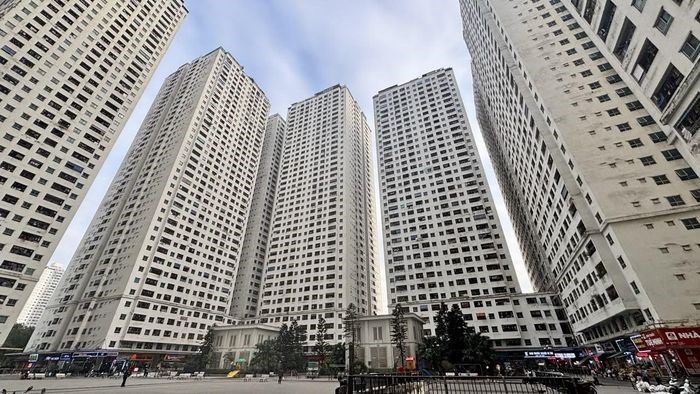In its Q1 2025 report, the Vietnam Association of Realtors (VARS) stated that the total housing supply increased by 33% compared to the same period in 2024, reaching approximately 27,000 units.
Among these, 14,500 units came from newly launched projects — three times higher than in Q1 2024. The rest were unsold units that continued to be offered. Notably, the high-end and luxury segments still dominated the apartment supply, accounting for 58%, up 11 percentage points from the same period last year.
The dominance of the high-end segment in supply has pushed up the overall selling prices of apartments. In Hanoi alone, the average apartment price has reached VND 70.2 million per square meter, up 2.5% from the previous quarter and 77.6% higher than in Q3 2019. This price increase mainly stems from developers relaunching projects at slightly higher prices.

Secondary Apartment Prices in Hanoi Are Stabilizing
"Meanwhile, in the secondary market, prices of some apartment projects in Hanoi are showing signs of leveling off. This is a period of price correction following a sharp increase in 2024," VARS experts noted.
The association also emphasized that current secondary transactions are mostly recorded in large urban township projects that are already inhabited. Furthermore, buyers are generally only willing to pay prices around VND 50 million/m². If prices exceed this level, the target customers shift to the high-end segment, and they tend to prefer apartments in central Hanoi.
Faced with surging apartment prices, the Government has introduced a series of policies in Q1 2025 aimed at promoting housing opportunities for citizens and unlocking the supply of social housing. Credit policies have also been adjusted to support homebuyers, particularly young people, in accessing housing.
In parallel, the Ministry of Construction is urgently studying the model for a National Housing Fund, intended to develop affordable housing in major cities. For the fund to operate effectively, in addition to mobilizing state budgets and enterprise contributions, it must clearly identify beneficiaries, define specific goals, and establish a strict supervision mechanism. Furthermore, the development of synchronized technical and social infrastructure around fund-supported projects must also be implemented.
“In addition, if a state-run real estate and land-use rights transaction center is established on a proper scale, it could become a ‘trump card’ to guide the market toward safer, healthier, and more sustainable development,” VARS experts commented.


 Zalo
Zalo Webchat
Webchat